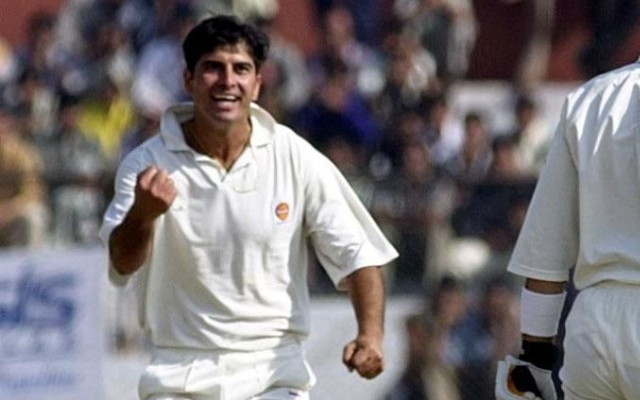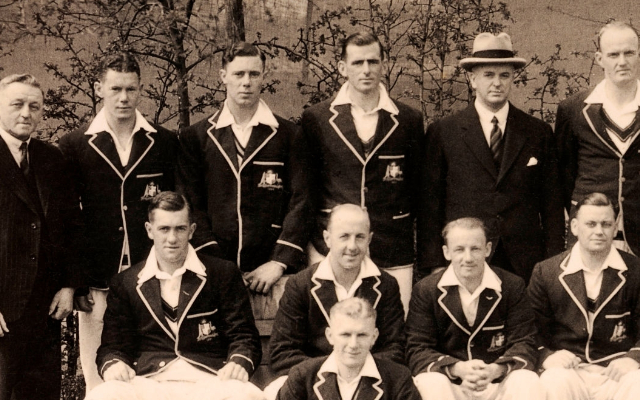5 Instances when tailenders opened the batting in Test cricket
Here we look at five times when the tailenders were promoted to opening the batting in Test cricket.
2 Min Read

In the modern-day, the International teams are not accustomed to using the idea of pinch hitters and even the usage of night-watchman has come down considerably. There were instances of teams promoting the likes of Irfan Pathan, Nicky Boje and Daniel Vettori up the order to utilize their batting prowess. However, there were occasions of teams letting the usual No.10 and No.11 position batters to open the innings to finish off the day or protect the specialist batters from tricky situations.
Here we look at five times when the tailenders were promoted to open the batting in Test cricket:
5. Iqbal Siddique

Maharashtra pacer Iqbal Siddique got to make his Test debut during the 2001 Mohali Test match against England. Little did he know that it would turn out to be his only appearance in an International match. Mohali had a great reputation of being an ideal track for the pacers but the India-England Test favoured spinners.
Siddique got to bowl only 19 overs across both innings and managed to pick up a wicket. His major contribution in the Test came with the bat as he scored a quick 24 after coming to bat at No.10 position. India extended their lead to 231 and later bowled out the visitors for only 235 runs.
Chasing a target of 5 runs, the first-innings centurion Deep Dasgupta opened the batting with Siddique instead of Shiv Sunder Das. Siddique, who faced the first ball of the innings from Matthew Hoggard, struck a boundary and followed it with a six to wrap up the match. Thus, Siddique’s last ball of his International career was a winning shot of a Test match.
4. Jack Leach

England’s Jack Leach is the recent most tailender who ended up opening the batting in Test cricket. Till date, Leach batted in 18 innings out of the 10 Tests he played. The left-hander came to bat at No.10 or No.11 on 15 occasions and opened the batting twice. The first instance of him opening the batting came during the Pallekele Test against Sri Lanka in late 2018. Leach was set to play through the one over which England needed to survive before the stumps on day two.
He was successful in this task and was dismissed in the 2nd over on the 3rd morning. England were once again needed to play one over before the stumps on the opening day during the last year’s Lord’s Test against Ireland. England were bowled out for only 85 after electing to bat first. Ireland took a 122-run lead before being bowled out for 207. Leach once again survived the tricky final over of the day.
However, he did not stop with that as he batted through the morning session on 2nd day. He faced 161 balls scoring 92 runs with the help of 16 fours and shared a 145-run partnership for the 2nd wicket with Jason Roy. Leach’s knock helped England set Ireland a target of 282 runs and ended up winning the match by 143 runs. In a match where pacers dominated, Jack Leach ended up winning the player of the match award for his batting. The left-arm spinner bowled a total of three overs and conceded 26 runs without picking a wicket.
3. Morne Morkel

Morne Morkel wasn’t the best at scoring big runs down the order but could last for a long period when needed. During the 2009 Sydney Test against Australia, the left-handed batsman got a chance to open the batting. Morne featured in 86 Test matches and batted in 104 innings but the 2nd innings of the 2009 SCG Test was the only instance of him batting outside the bottom four.
South Africa took a series-winning lead of 2-0 ahead of the 3rd and final game of the 3-match series. Australia, with a hope of avoiding a whitewash, scored quick runs in the 2nd innings to set a target of 376 in front of the visitors in close to four sessions. Morne walked to open the innings alongside Neil McKenzie though only 5.5 overs were passed after the Tea break on the 4th day.
Reason for Morkel opening the batting was their skipper and regular opener Graeme Smith’s fractured left hand. Smith had to retire hurt after scoring 30 in the first innings as he dealt a blow on his left hand. Morkel coming up the order helped the middle order batsmen bat at their regular position. However, the lanky pacer lasted only two balls as he was dismissed by Doug Bollinger in the 2nd over of the innings. Smith came to bat at No.11 and was dismissed when they were only 10 balls away from saving the Test.
2. Danny Morrison and Michael Seddon

Not often in Test cricket that the players slated to bat at No.10 and No.11 turn up to open the innings. However, New Zealand created one such instance during the 1990 Christchurch Test match against India. During the first innings, Michael Sneddon batted at No.10 for the hosts while Danny Morrison batted at No.11 spot. The duo scored only three runs and one run respectively in that innings.
Morrison claimed a 5-wicket haul as India were bundled out for 164 runs and were forced to follow-on as they ended 295 runs behind the home team’s total. Sneddon claimed two wickets apiece in the two innings while Morrison took the big wicket of WV Raman in the 2nd essay. India did manage to avoid an innings defeat at they were bowled out for 296 and could take a lead of just one run.
New Zealand were made to bat again to chase down a target of two runs to take a 1-0 lead in the 3-match Test series. In such a scenario, the New Zealand’s No.10 and No.11 from the first innings turned up as opening pair. Sneddon took a single on the 2nd ball of the first over bowled by Manoj Prabhakar while Morrison picked the winning run on the 5th ball to finish off the Test. It turned out to be the only instance of opening the batting in a Test innings for both Seddon and Morrison.
1. Bill O’Reilly and Chuck Fleetwood-Smith

Australia were 0-2 down in the 1936-37 Ashes series after the completion of two games. The first two days of the 3rd Test that began on New Year day were affected by rain. On the 2nd morning, Australia lost three wickets for 19 runs. Sensing a chance, Sir Donald Bradman declared the innings at 200/9 after the fall of 9th wicket. This led England battig in tough conditions and left them reeling at 76/9.
England captain Sir Gubby Allen thought in Bradman’s way and declared with 45 minutes left in the day. In such a scenario, Don Bradman decided to reverse their batting order to protect their main batters. In this process, Australia sent their bottom three in the first three positions. This led to No.10 and No.11 batsmen Bill O’Reilly and Chuck Fleetwood-Smith walking out to open the innings.
Keith Rigg was the only player in the Australian line-up to bat at the same position in both innings of this Test. He batted at No.4 while Australia’s top three took the positons between No.5 and No.7. However, both the players failed to trouble the scorers and registered ducks. O’Reilly gave a return catch to Bill Voce on the very first ball of the innings while Smith also got out without opening his account in the bowling of Voce only.
The strategy did work for Australia as Bradman smashed 270 from only 375 balls while batting at No.7 position. Opener Jack Fingleton gave much-needed support for Bradman as he amassed 136 runs in a marathon inning where he faced 428 balls. The duo’s partnership of 346 runs helped Australia to finish with 564 runs and set a target of 689 in front of the English team. The hosts were bowled out for only 323 runs and lost the match by 365 runs.
Download Our App